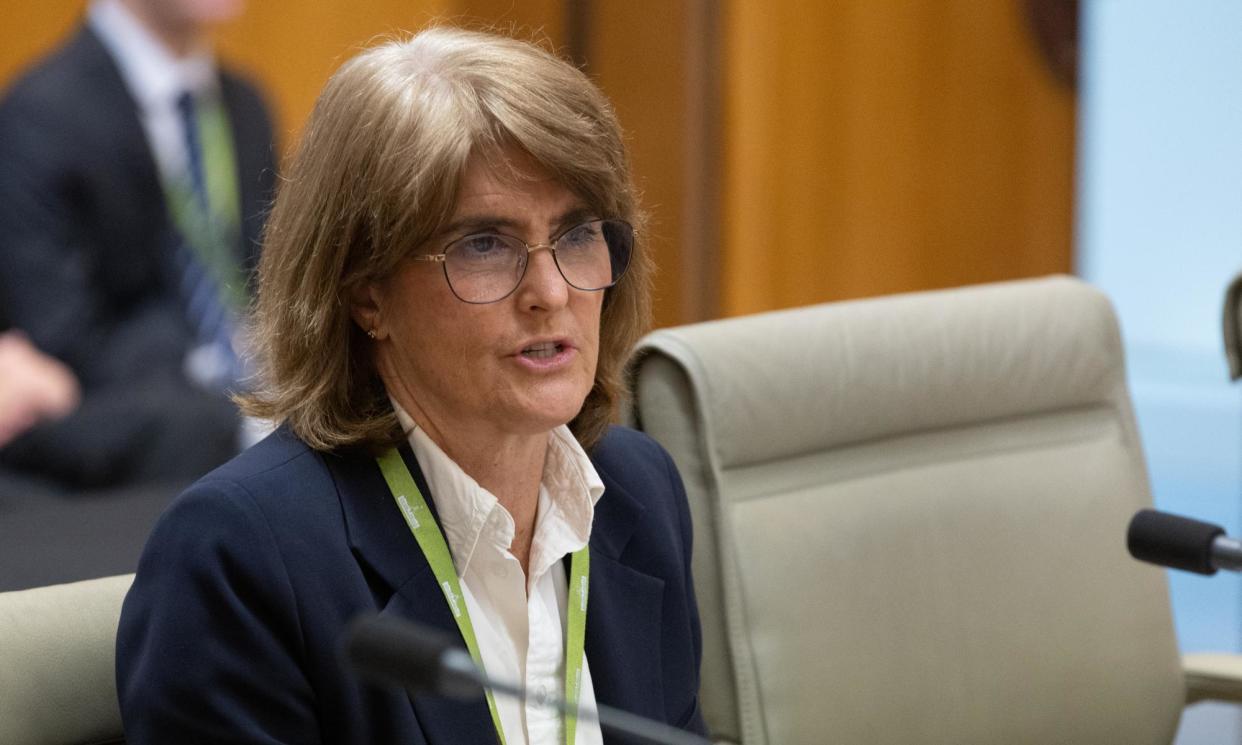When Michele Bullock tells us she’s not for turning in fighting inflation we should believe her

The Reserve Bank governor, Michele Bullock, tells us she’s not for turning in the fight against inflation – but nor is she keen to pulverise what remains of growth in the Australian economy.
We should take her at her word.
Speaking just before the release of March quarter national accounts revealed economic growth of a mere 0.1%, Bullock told Senate estimates the board “won’t hesitate to act” by lifting interest rates, should inflation’s retreat stall.
Coalition senators and the shadow treasurer, Angus Taylor, might well be hoping to campaign on a 14th rate hike in this cycle, but they can’t bank on one. A rate rise, after all, would serve as a retribution of sorts since the RBA’s first increase, in May 2022, contributed mightily to their exit from government.
Bullock, however, made clear that despite all the crosswinds, Australia remains on a narrow track. That’s where the economy slows without stalling and inflation drops towards the RBA’s desired landing spot between 2% and 3%, even if the descent is bumpy.
“If we can slow … demand for labour a little bit, [while] still having employment growing, then that will be a narrow path for us,” she said.
Bullock, in other words, was reminding everyone that the RBA’s mandate covers not just inflation – which attracts most of the headlines and economist punditry – but also full employment.
Indeed, beyond the ACTU and Acoss, the labour market stirs scant attention despite the remarkable employment growth in Australia and elsewhere since Covid. (Economic students will find it a rich PhD vein to mine.)
Having the jobless rate hovering about 4% explains why bankruptcies and mortgage-arrears generally remain below historic levels even if they are on the rise, as Bullock noted to senators.
Saul Eslake, an independent economist said if monetary policy is working, then GDP growth should slow. Exactly what the March quarter national accounts show.
“It will actually be an achievement worth celebrating if the RBA (and other central banks) can get inflation down to their targets without having a ‘recession’,” Eslake says. “So far, they look on course to do that.”
Recessions are usually defined as two consecutive quarters of negative growth even if the gauge is not very useful. Per capita GDP, for instance, has been falling for five quarters.
“Inflation itself, and unemployment, are much more important signals for the RBA than real GDP – which, after all, is very backward-looking,” he said. Today’s data told us what was happening around about mid-February, or more than three months ago.
Eslake, though, rejects calls that the economy is beset by “stagflation”.
“It was an appropriate term to use in the second half of the 1970s and (in Australia at least) much of the 1980s when we simultaneously had high – much higher than today, often more than 10% – inflation and unemployment,” he said.
Such a painful combination, which conventional economic wisdom of the 1945 to 1975 period said “couldn’t happen”, is far removed from current inflation of about 3.5% and a 4% jobless rate, Eslake said.
Bullock, for her part, discouraged reading too much into inflation as a pointer to the board’s stance on interest rates.
Consumer prices rose at an annual rate of 3.6% in April, we learned last week. The RBA has anyway forecast the June quarter will register a 3.8% inflation pace, implying an even higher rate in May and June alone.
The June quarter CPI figures would be “important” when they land on 31 July but would not be “the single thing to be looked at”, Bullock said.
Taking in the bigger picture, then, interest rates aren’t about to budge unless there’s a big surprise – good or bad – for the economy.


